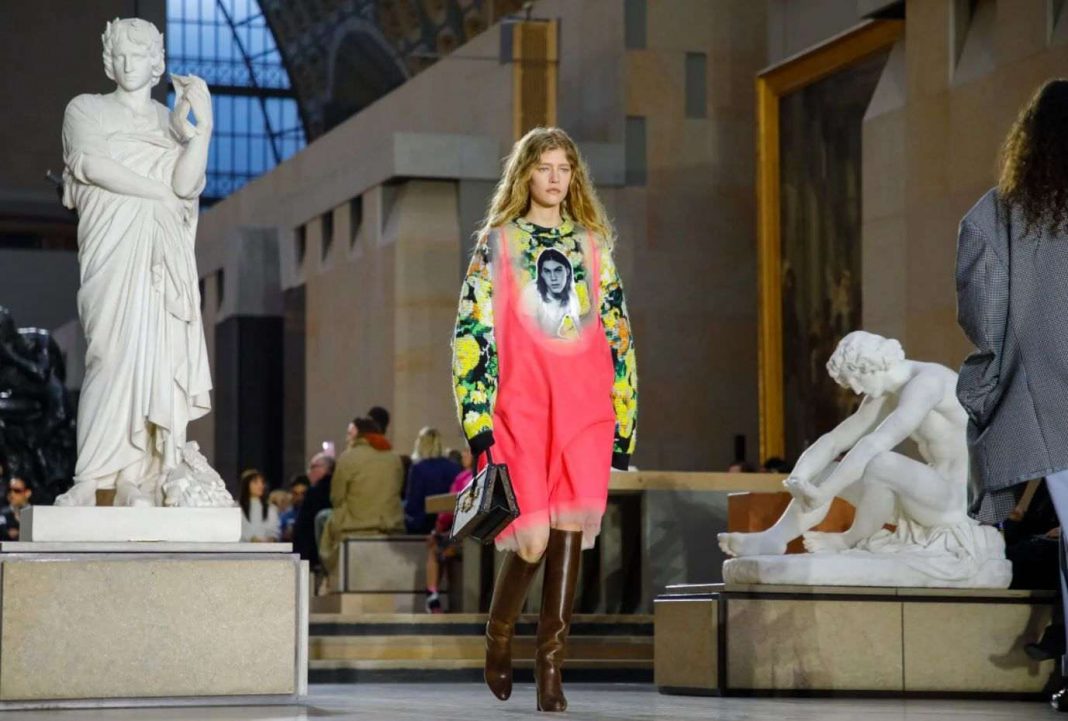The Gordian knot at the heart of fashion’s obsession with youth is that the exact generation that is most obsessed with it is also the one that is least likely to be able to afford to dress accordingly.
This preoccupation with fashion has been explained in various ways, including the need for new ideas and/or the ability of the brand to seduce future customers. However, on the penultimate day of the fall season, in the vaulted entry hall of the Musee d’Orsay, filled with 19th-century marbles and hosting their first fashion show, Nicolas Ghesquière of Louis Vuitton provided a different explanation.
To do this, Mr. Ghesquière dug into his memory box, reassembling fragments of the recent past, altering the scale of the compositions, blending patterns, and tampering with historical records in a sophisticated game of dress-up and allusion.
Finally, several floating embroidered dresses were seen over big striped rugby shirts or bulky knitwear towards the conclusion of the show. I got the impression that some youngster had tunnelled into the closets of her parents, thrown everything up in the air, and then watched where everything lands. There was nothing antique about the pairings, which were at times uncomfortable and at other times bizarre.
Or at least make an attempt. While his abbreviated minidresses in Aubusson prints, wide-angled flares, and mousseline gowns appeared mostly trapped — not in amber, but in his preferred rose-tinted lens — Giambattista Valli accomplished it by navigating between the French youthquake of the 1960s and 1970s and the classic decorative arts.
The Sacai designer achieved this through her signature hybrids, which reimagined pieces normally associated with utilitarianism and protective cover in couture shapes. Tank tops and parachute skirts became graceful, drop-waist dresses; bubble puffers were merged with a trench yoke; bra tops were woven into shearling to create an empire line; and bustiers were fashioned from overcoats, to name a few examples. Despite the fact that they were less chaotic and more calculated than they had been in the past, they nevertheless compelled you to question your preconceptions.
President John F. Kennedy’s 1963 “A Strategy of Peace” address at American University in Washington, D.C., served as inspiration for the collection, which is on display on the top floor of the Centre Pompidou with the city of Paris stretched out below and a tape of the speech playing as a prelude.
designers have been borrowing from the arts for as long as they have been chasing the youth vote, and while obvious referencing can often appear lazy or reductive, such as the fashion version of a souvenir T-shirt, it proved inspired here, challenging Ms. McCartney’s own design thinking and resulting in a successful collection.
At times, the connection was direct and literal: knitwear pieced together in the style of Mr. Stella’s “V-series” of lithographs, his vibrant “Spectralia” mélange reproduced on a swingy trouser suit and jersey dress, and graphic diagonal stripes on chunky fake furs and trouser suits, all of which were intended as a direct nod to Mr. Stella’s work. There were more abstract elements as well: structured shoulders, billowing sleeves on silk blouses that were slit open to (ahem) frame the arms, and cool cotton denim boilersuits that were made to seem like crushed velvet, similar to the sort worn by painters in their studios. However, it always seemed to be simple.

